House lizards are amazing but misunderstood and generally disliked creatures. They are often disliked by people because they like to climb into their homes and frighten them with their big staring eyes.
House lizards usually lay their eggs in moist areas that are exposed to the open air. These include cracks in floors, walls, ceilings, around pipes, and bathtubs.
They are also known to lay their eggs under doors (especially under patio doors), on windowsills, and other sources of heat.
Table of Contents
How to Identify Lizard Eggs?
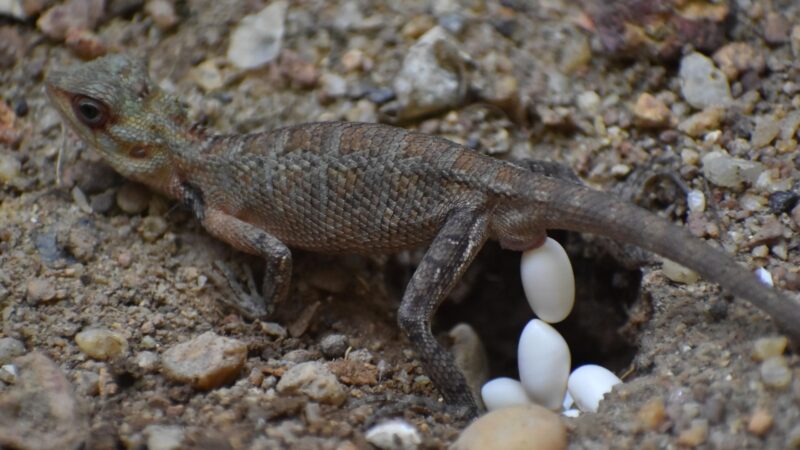
House lizards, like all reptiles, lay eggs. To identify house lizard eggs, make sure to check if they are round and white in color since these are the typical characteristics of house lizard eggs.
Lizard eggs can be dark, light, or even transparent. They are also often covered in short spikes or ridges on their surface. The eggs of a house lizard are typically about 1/2 inch in diameter and 1/4 inch long.
What You Should Do When You Spot a Lizard Egg in Your Home?
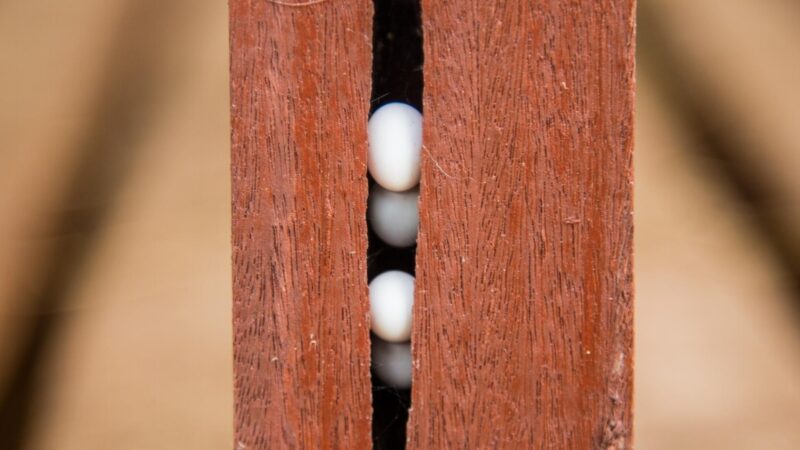
Lizards are one of the most common inhabitants of your home. They’re often associated with being a pest, but they can also play an important role in keeping your house clean and healthy.
So, if you see a lizard egg in your home, here are the things you can do:
- The first thing you should do is check the things around it to ensure that it has not been tampered with or damaged in any way.
- If it hasn’t been harmed, there’s no reason not to keep it. Be sure to place it somewhere that won’t be disturbed by people or pets who may accidentally step on it while walking around the house.
- Once you’ve done this, you can begin caring for the lizard egg by keeping it somewhere warm and dark until it hatches into a baby lizard.
- When the egg begins to hatch, put a small bowl of soapy water nearby so that when the baby lizard emerges from its shell, it can climb right back into its original container before getting wet again.
Where Do Lizards Get Their House Eggs?
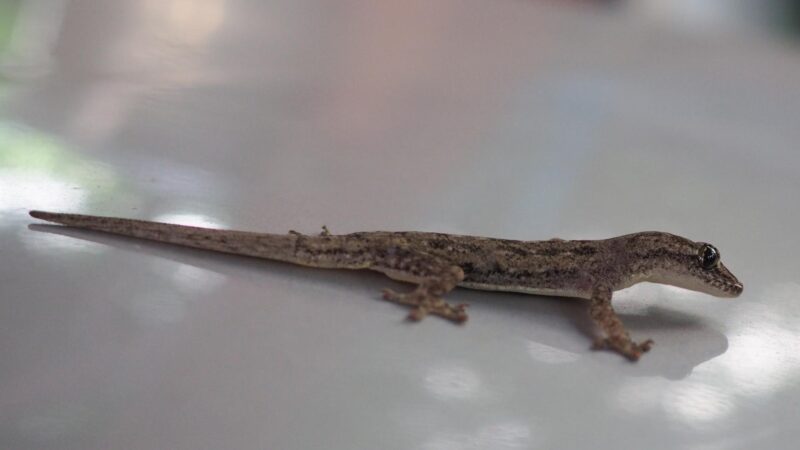
The most common location for these lizards to lay their eggs is near or on the ceiling of the room in which they reside. These eggs can also be found near windows or vents, but only if there is enough space for them to move around freely and not have to compete with other animals or debris.
House lizards lay their eggs on the ground outside of the home. Females will often dig a hole (around 6 inches or so) to lay their eggs. They push the dirt aside until she creates an area about two inches wide and twelve inches long.
If you have multiple lizards that live in your home, then it is likely that at least one will be laying eggs somewhere within it. These places may typically include walls and ceilings, pipes, around pipes, etc.
How Many Eggs Does a House Lizard Lay?
House lizards are usually solitary animals, but they will sometimes mate and lay eggs if they are in a breeding mood. The number of eggs a house lizard lays depends on the species and size of the female.
In general, females larger than 3 inches long will lay more eggs (usually 3-12 eggs) than smaller females, but this varies by species.
However, smaller lizards are generally more prolific egg-layers than larger lizards, making them lay eggs more frequently. For example, according to the study conducted by Hans Recknagel and Kathryn Elmer of the University of Glasgow in 2019, the common brown lizard has been known to produce about 50 eggs per clutch when it mates and lays them in the same location every time.
How Long Does It Take House Lizard Eggs to Hatch?
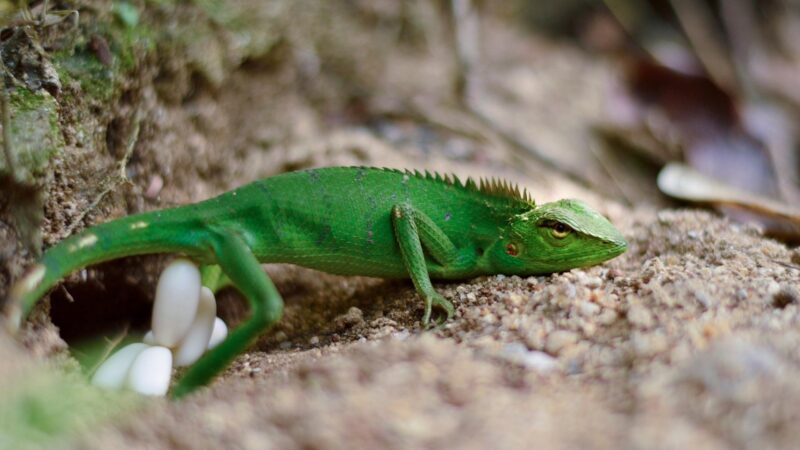
The length of time that it takes a house lizard egg to hatch depends on many factors, including ambient temperature and humidity levels.
Typically, house lizard eggs are much less sensitive to temperature fluctuations than other species’ eggs. According to Palm Desert Center, a house lizard egg might take as much as 40 days to hatch and could take as long as 60 days.
In addition to temperature and humidity, the amount of light in the nest will affect the hatching time. If there is no artificial lighting or if there is insufficient light for the eggs to hatch, they may not hatch until they are moved into an area with more natural lighting.
Do Lizards Sit On Their Eggs?
Lizards do sit on their eggs. They need to warm up the eggs so they can be incubated. The lizard will also often cover the egg with a membrane to keep out dust and other debris.
She will then crouch down on her eggs. Her tail is used to keep the eggs secure and uses it to help her move around.
How Do You Know If a Lizard Egg Is Alive?
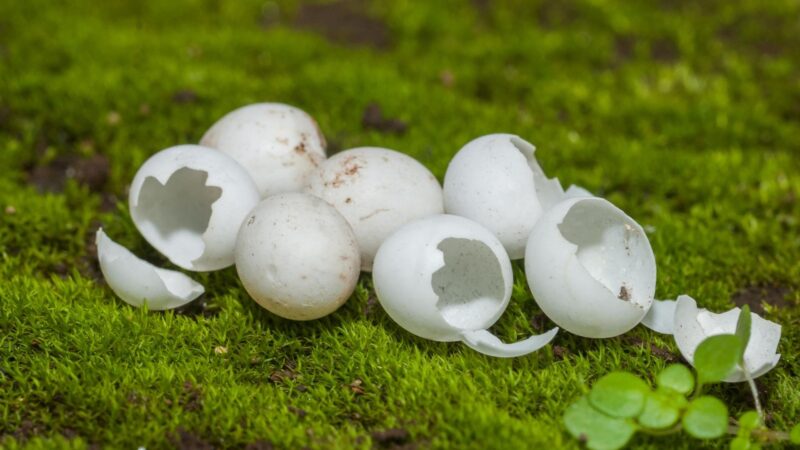
The first thing to do is to examine the egg to make sure that it’s an egg. You can do this by gently tapping the egg with your finger. If you hear a hollow sound, it’s probably a live egg.
On the other hand, if the egg does not make a hollow sound when you tap it, it’s probably not alive.
What Is the Lifespan of a Lizard?
House lizards typically live for about a year. In some cases, they can live up to ten years if they aren’t hurt by predators or if they are also provided with food.
Are Lizards Good to Have Around the House?
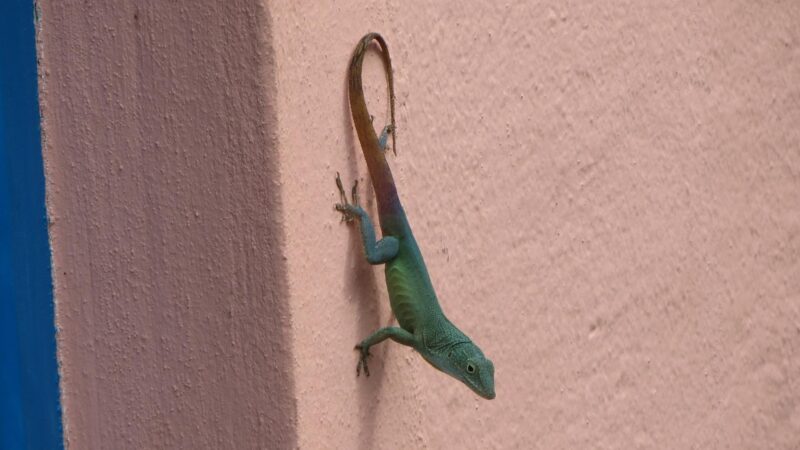
Lizards are great to have around the house. They’re quiet and don’t make a lot of noise, and they can be fed crickets or mealworms as a food source. Also, they won’t try to bite you if they’re given half a chance.
However, there are some downsides to having lizards around your home. For example, they may try to climb up onto walls or furniture and get stuck there, which can be dangerous if they have nowhere to go.
What to Do if a Lizard Is in Your House?
If you find that a lizard has gotten into your house, there are a few things you can do:
- First and foremost, do not try to catch or kill the lizard yourself. If you attempt to do so, there is a good chance that it will bite you. It’s also possible that the lizard will run away from you and hide in another place in your house or yard.
- If you see that the lizard has gotten into your house, contact a wildlife rehabilitator immediately. They can help you get rid of the animal safely and humanely so that it doesn’t have to live on your property anymore.
Where Do Lizards Go at Night?
House lizards are nocturnal, which means they’re active at night. Most of the time, they’ll hide in dark crevices or under rocks, logs, ceilings, or walls, but they can also use their camouflage to blend in with their surroundings.
What Attracts Lizards to Your House?
Lizards are attracted to several things, which include the following:
- Temperature. Lizards are attracted to your house because of the temperature. They prefer warm and humid environments. The humidity in your home helps maintain a steady temperature and creates a more comfortable environment for lizards.
- Flying insects. Lizards are likely attracted to flying insects by their bright colors. The bright colors of the flying insects may also serve as a signal to other lizards, indicating that there is a good source of food nearby.
- Fruits and plants. House lizards are also attracted to fruits and plants because they provide them with the nutrients they need to survive. They have a high requirement for protein, which can be found in animal sources like insects and worms.
What Do Lizards Hate?
Lizards hate the sun. The bright light of a day sky can be painful to them. It’s even more harmful if they’re in a place that’s too bright.
Lizards also hate loud noises like thunder or fireworks. This is because sound waves travel faster than light waves—so when there’s a big bang, it will hit you first through your ear holes before it reaches your brain!
How to Get Rid of Lizards in Your House Naturally?
Lizards can be a nuisance in your home. They can cause a lot of damage to your plants, furniture, and even the walls by leaving behind their waste.
If you have lizards in your house, it is important that you do something about it right away. Here are some tips on how to get rid of lizards naturally:
- One common way to get rid of lizards naturally is to remove their food source. Lizards will come to a place where they feel comfortable because they are hungry. If the food source is gone, the lizard will move on to another area or leave your home altogether.
- Also, remove all trash bags and food containers from areas where you see lizards congregating. Make sure there is nothing left out where they can find it.
- Turn off your lights. Lizards are nocturnal animals, so they’re going to be staying pretty active at night during this time. If you want to keep them away from your home during the day, it’s important to keep lights off at night (or turn off all light fixtures when not in use).
What Does It Mean When You See a Baby Lizard in Your House?
Seeing a baby lizard in your house can be an exciting sign that there are lizards nearby. It is not uncommon for lizards to make their way into homes and yards because they like warm places to live and eat.
It could also be that your kids are keeping the lizards as pets or trying to breed them for profit.
Will Lizards Crawl in Your Bed?
It is highly unlikely that lizards will crawl into your bed unless they have potential prey that accidentally falls into your bed.
Another reason is when they are fighting while hanging on your ceiling, and one of them accidentally falls on your bed. They will likely crawl into your bed to immediately escape.
Summary
To sum it all up, house lizards are one of the many species that are not generally harmful to humans. Despite their penchant for humans, the house lizard is a better animal to have around the house.
House lizards are insectivores. They only eat insects, so they will not feed on your beloved cat’s hair or swallow your pet hamster.
List of Sources
The Auditory Brainstem Response in Two Lizard Species